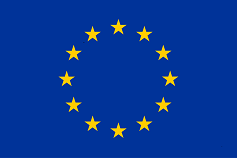EU Funding
Accelerating drug and biomarker discovery through a new proteomic service: DrugPhosphoProfiler
At present there is a huge interest in the pharmaceutical industry to find and develop new drugs targeting protein phosphorylation and their related biological pathways, due to the critical implication of these processes in many pathologies. The high complexity of these phosphorylation-dependent cellular signalling network makes very difficult to have a clear idea about the mechanism of action of a particular drug as well as its side effects. Unfortunately, existing approaches are unable to provide comprehensive, robust and quantitative data of cellular phosphorylation needed to support faster and more efficient drug discovery and development. Consequently, there is a large and unmet need in the pharmaceutical industry for identifying related therapeutic, toxicity targets and biomarkers, in order to develop better drugs. We are developing DrugPhosphoProfiler, an innovative mass spectrometry (MS)-based high-throughput platform for systematically measuring the effects of pharmaceutical agents on phosphorylation-dependent cellular networks in a proteome-wide and drug concentration-resolved manner. DrugPhosphoProfiler will be a unique, high-content drug discovery and development tool capable of providing essential and quantitative molecular pharmacodynamic data based on 25,000 phosphorylation sites in a single assay. The information obtained by our solution will go far beyond existing antibody-based detection systems and overcome their limits in terms of specificity and comprehensiveness without compromising sensitivity and robustness. DrugPhosphoProfiler will thus increase the success rate of pre-clinical drug discovery as well as clinical trials and eventually lead to more effective treatment of disease. Through this project (estimated ROI of 6), we at OmicScouts (SME, Germany) aim to boost the competitiveness of our company, by generating €8.6M revenues and increasing our team to 27 people (from 12), just 5 years after commercialization.

This project has received funding from the European Union's Horizon 2020 research and innovation programme under grant agreement No 876415.
